Related Research Articles

Edward of Woodstock, known to history as the Black Prince, was the eldest son and heir apparent of King Edward III of England. He died before his father and so his son, Richard II, succeeded to the throne instead. Edward nevertheless earned distinction as one of the most successful English commanders during the Hundred Years' War, being regarded by his English contemporaries as a model of chivalry and one of the greatest knights of his age.

Charles II, known as the Bad, was King of Navarre beginning in 1349, as well as Count of Évreux beginning in 1343, holding both titles until his death in 1387.

Charles V, called the Wise, was King of France from 1364 to his death in 1380. His reign marked an early high point for France during the Hundred Years' War, with his armies recovering much of the territory held by the English, and successfully reversed the military losses of his predecessors.
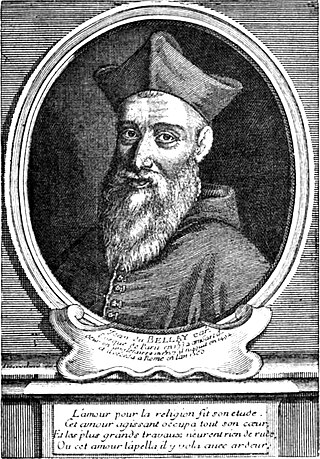
Jean du Bellay was a French diplomat and cardinal, a younger brother of Guillaume du Bellay, and cousin and patron of the poet Joachim du Bellay. He was bishop of Bayonne by 1526, member of the Conseil privé of King Francis I from 1530, and bishop of Paris from 1532. He became Bishop of Ostia and Dean of the College of Cardinals in 1555.

Jeanne Bécu, Comtesse du Barry was the last maîtresse-en-titre of King Louis XV of France. She was executed by guillotine during the French Revolution on accusations of treason—particularly being suspected of assisting émigrés to flee from the Revolution.

The Battle of Ivry was fought on 14 March 1590, during the French Wars of Religion. The battle was a decisive victory for Henry IV of France, leading French royal and English forces against the Catholic League by the Duc de Mayenne and Spanish forces under the Count of Egmont. Henry's forces were victorious and he went on to lay siege to Paris.
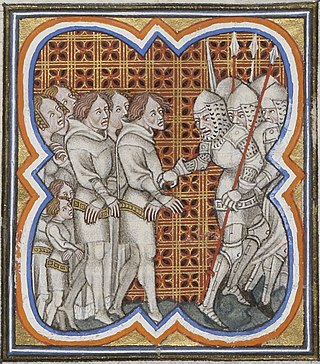
The Jacquerie was a popular revolt by peasants that took place in northern France in the early summer of 1358 during the Hundred Years' War. The revolt was centred in the valley of the Oise north of Paris and was suppressed after over two months of violence. This rebellion became known as "the Jacquerie" because the nobles derided peasants as "Jacques" or "Jacques Bonhomme" for their padded surplice, called a "jacque". The aristocratic chronicler Jean Froissart and his source, the chronicle of Jean le Bel, referred to the leader of the revolt as Jacque Bonhomme, though in fact the Jacquerie 'great captain' was named Guillaume Cale. The word jacquerie became a synonym of peasant uprisings in general in both English and French.
The County of Armagnac, situated between the Adour and Garonne rivers in the lower foothills of the Pyrenées, was a historic county of the Duchy of Gascony, established in 601 in Aquitaine. In 960, the title of 'Count of Armagnac' was established, and thus the County of Armagnac was created. In 1751, following the death of childless Charles de Lorraine, Comte d'Armagnac, the county was absorbed into the Crown lands of France and the King, then Louis XV took the title of 'Count of Armagnac'. In 1791, following the decree dividing France into departments, the county was disestablished, but remains an important natural region of France.

Jean de Meun was a French author best known for his continuation of the Roman de la Rose.

The first phase of the Hundred Years' War between France and England lasted from 1337 to 1360. It is sometimes referred to as the Edwardian War because it was initiated by King Edward III of England, who claimed the French throne in defiance of King Philip VI of France. The dynastic conflict was caused by disputes over the French feudal sovereignty over Aquitaine and the English claims over the French royal title. The Kingdom of England and its allies dominated this phase of the war.

The Praguerie was a revolt of the French nobility against King Charles VII from February to July 1440.

The Battle of Nájera, also known as the Battle of Navarrete, was fought on 3 April 1367 to the northeast of Nájera, in the province of La Rioja, Castile. It was an episode of the first Castilian Civil War which confronted King Peter of Castile with his half-brother Count Henry of Trastámara who aspired to the throne; the war involved Castile in the Hundred Years' War. Castilian naval power, far superior to that of France or England, encouraged the two polities to take sides in the civil war, to gain control over the Castilian fleet.

The siege of Compiègne (1430) was conducted by Duke Philip III of Burgundy after the town of Compiègne had refused to transfer allegiance to him under the terms of a treaty with Charles VII of France. The siege is perhaps best known for Joan of Arc's capture by Burgundian troops while accompanying an Armagnac force during a skirmish outside the town on 23 May 1430. Although this was otherwise a minor siege, both politically and militarily, and ultimately ended in a defeat for the Burgundians, the capture of Joan of Arc was an important event of the Hundred Years' War.
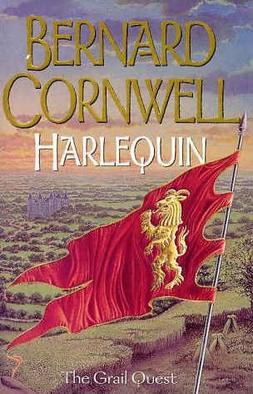
Harlequin is the first novel in The Grail Quest series by English author Bernard Cornwell, first published in 2000. The story takes place in the mid-14th century, during the Hundred Years' War.
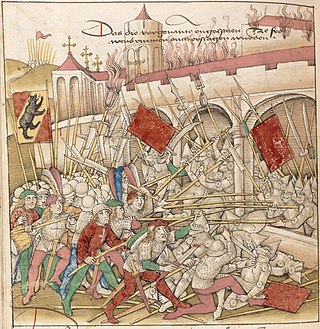
The Guglers were a body of mostly English and French knights who as mercenaries invaded Alsace and the Swiss plateau under the leadership of Enguerrand VII de Coucy during the Gugler War of 1375.

A free company was an army of mercenaries between the 12th and 14th centuries recruited by private employers during wars. They acted independently of any government, and were thus "free". They regularly made a living by plunder when they were not employed; in France they were called routiers and écorcheurs and operated outside the highly structured law of arms. The term "free company" is most often applied to those companies of soldiers which formed after the Peace of Brétigny during the Hundred Years' War and were active mainly in France, but it has been applied to other companies, such as the Catalan Company and companies that operated elsewhere, such as in Italy and the Holy Roman Empire.

Jeanne de Clisson (1300–1359), also known as Jeanne de Belleville and the Lioness of Brittany, was a French/Breton noblewoman who became a privateer to avenge her husband after he was executed for treason by King Philip VI of France. She crossed the English Channel targeting French ships and often slaughtering their crew. It was her practice to leave at least one sailor alive to carry her message of vengeance.
The croquant rebellions were several peasant revolts that erupted in Limousin, Quercy, and Perigord (France) and that extended through the southeast of the country in the latter part of the 16th and beginning of the 17th centuries.
Tard-Venus were medieval groups of routiers that ravaged Europe in the later years of the reign of King John II of France.
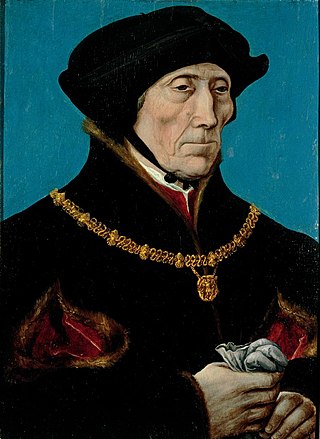
Guillaume de Montmorency was Baron de Montmorency and lord of Chantilly. As general of finances for the king, he was governor of several royal castles and accompanied Louis XII during the Italian War of 1494–1498.
References
- ↑ André Bossuat , Perrinet Gressart and François de Surienne, agents of England. Contribution to the study of the relations of England and Burgundy with France under the reign of Charles VII , Paris, Droz, 1936 , vol XXVI, p444.
- ↑ referenced in a letter of remission granted on 10 June 1379 to Guillemin Martin de Cromeneau, the bailiwick of Macon who had left his native country
- ↑ Bertrand Gille (eds.): History of techniques , Gallimard, coll. "The Pleiad", 1978